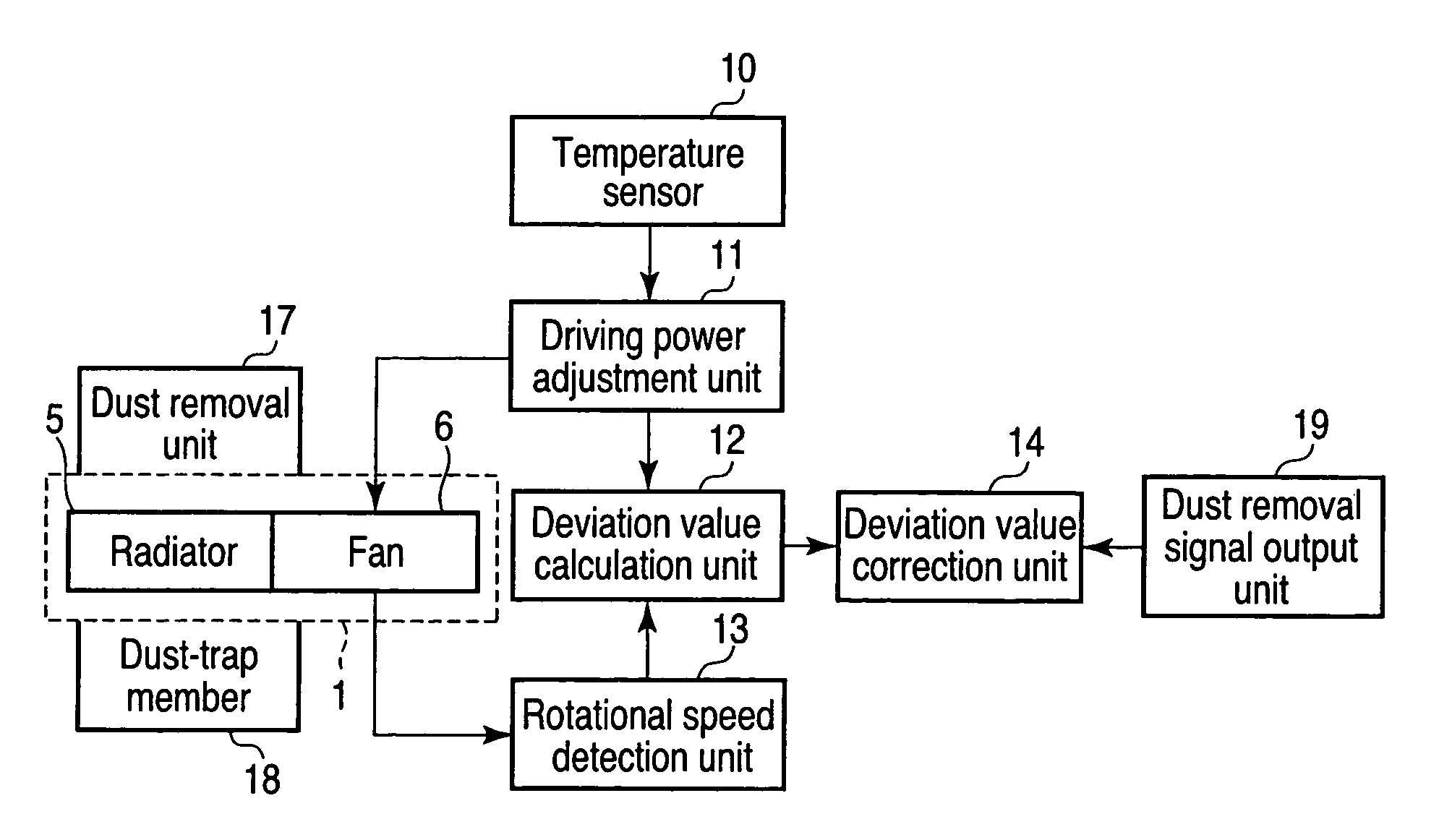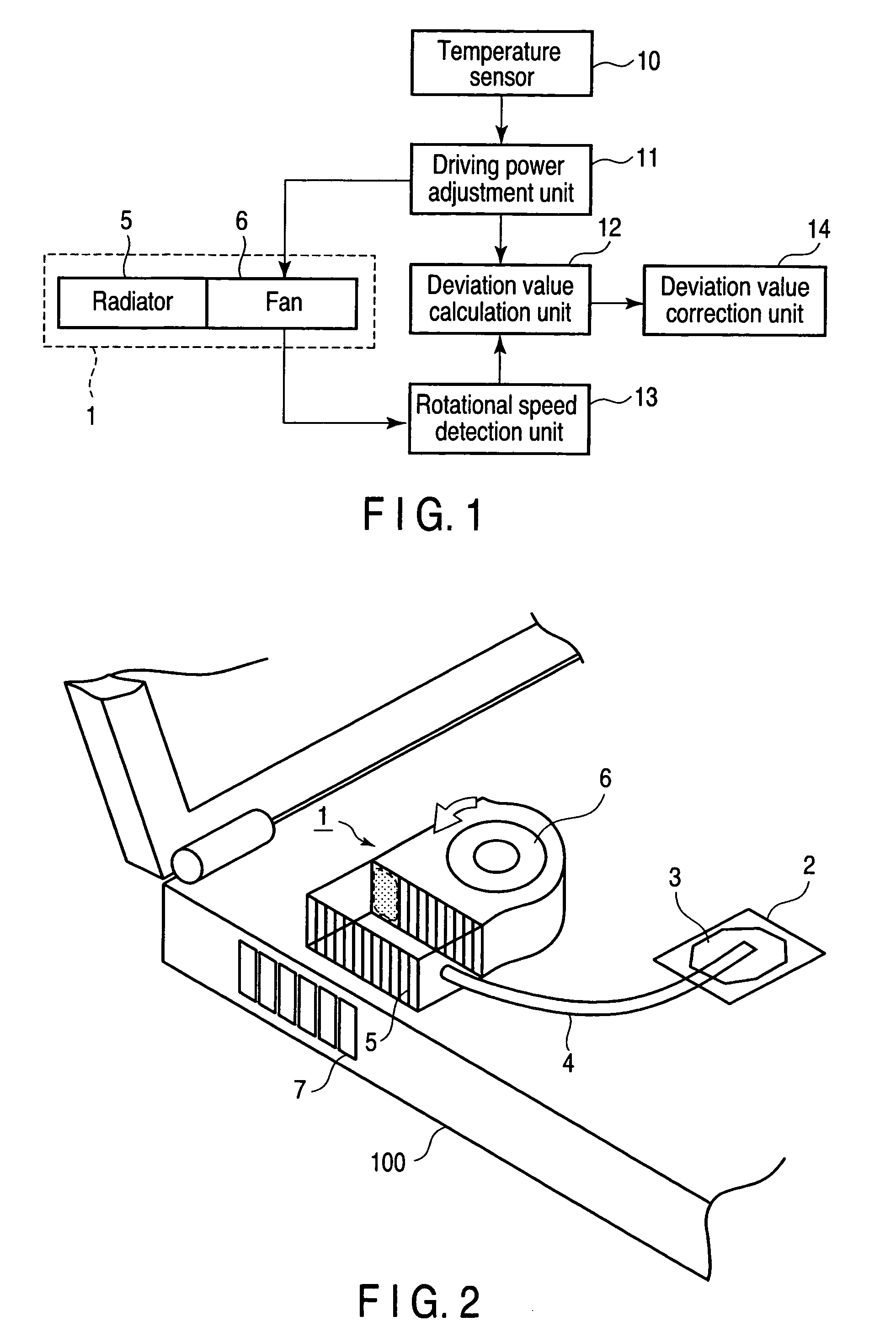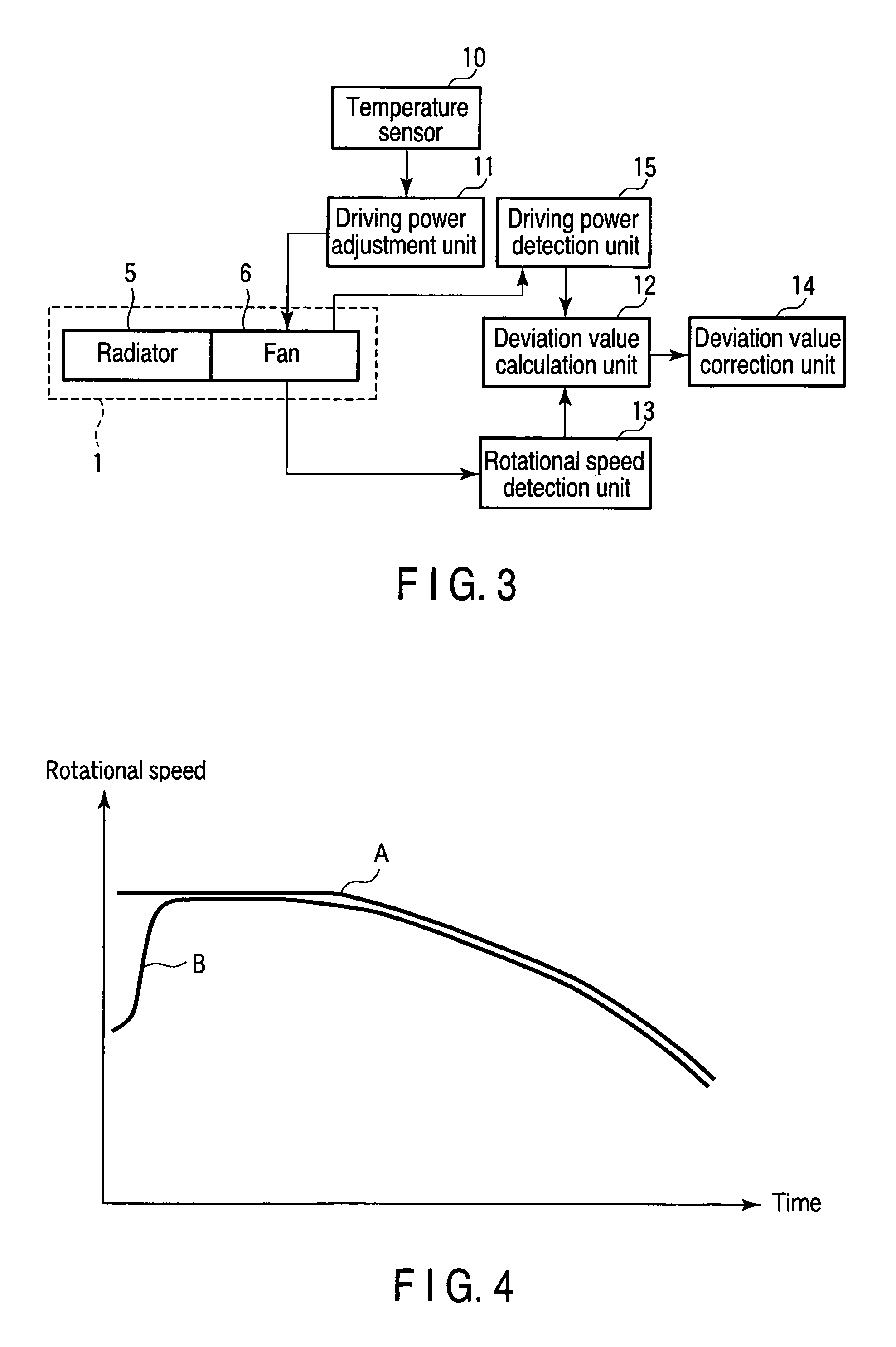Electronic device
a technology of electronic devices and lubricants, applied in the direction of electrical control, program control, instruments, etc., can solve the problems of affecting the heat dissipation effect, and affecting the cooling performance, so as to achieve the effect of dissipation of hea
- Summary
- Abstract
- Description
- Claims
- Application Information
AI Technical Summary
Benefits of technology
Problems solved by technology
Method used
Image
Examples
first embodiment
[0030]FIG. 1 is a block diagram of an electronic device having a cooling performance degradation detecting function according to the first embodiment. FIG. 2 illustrates the outer appearance of a cooling unit provided inside the case of an electronic device 100.
[0031]A cooling unit 1 includes a radiator 5 which dissipates heat transported from a heat generating portion 2 such as a CPU via a heated portion 3 and a heat pipe 4, and a fan 6 which rotates and sends air to the radiator 5 according to driving power. The radiator 5 is cooled by air sent from the fan 6.
[0032]A driving power adjustment unit 11 adjusts the driving power to be input to the fan 6 in accordance with the temperature of the heat generating portion 2 measured by a temperature sensor 10 incorporated in the CPU and a driving condition corresponding to the measured temperature. If the fan 6 employs, e.g., constant voltage PWM control, the driving power adjustment unit 11 adjusts the PWM signal to be output to the fan ...
second embodiment
[0058]FIG. 7 is a block diagram of an electronic device according to the second embodiment. The electronic device shown in FIG. 7 is formed by adding an operating time recording unit 16 to an electronic device 100 shown in FIG. 1. The same reference numbers as in FIG. 1 denote the same parts in FIG. 7, and a description thereof will be omitted.
[0059]The operating time recording unit 16 records the sum of the operating times of a fan 6. Correction is done using an aging expression (performance estimating expression) of the rotational speed of the fan 6 using the sum as a variable. The performance estimating expression may give a temporal decrease amount of the rotational speed at a predetermined duty ratio or a temporal increase amount of the duty ratio at a predetermined rotational speed. For example, in (1) of the first embodiment, the difference between the duty ratio at a predetermined rotational speed in the first use and that at a given timing is defined as a value s in X=a+s. ...
third embodiment
[0060]FIG. 8 is a block diagram of an electronic device according to the third embodiment. The electronic device shown in FIG. 8 is formed by adding a dust removal unit 17 and a dust removal signal output unit 19 to an electronic device 100 shown in FIG. 1. The same reference numbers as in FIG. 1 denote the same parts in FIG. 8, and a description thereof will be omitted.
[0061]Upon detecting dust clogging based on a calculated deviation value, a deviation value calculation unit 12 instructs the user to operate the dust removal unit 17. This operation may automatically be done by causing an internal unit of the electronic device or another electronic device connected via a network to issue an instruction.
[0062]FIGS. 9 and 10 are views showing the dust removal unit 17. A hinge 21 which rotatably connects a display 20 to the case of the electronic device 100 may have a rotation spring or gear attached to it. The hinge 21 has a driving rod 22 which rotates as the display 20 opens or clos...
PUM
 Login to View More
Login to View More Abstract
Description
Claims
Application Information
 Login to View More
Login to View More - R&D
- Intellectual Property
- Life Sciences
- Materials
- Tech Scout
- Unparalleled Data Quality
- Higher Quality Content
- 60% Fewer Hallucinations
Browse by: Latest US Patents, China's latest patents, Technical Efficacy Thesaurus, Application Domain, Technology Topic, Popular Technical Reports.
© 2025 PatSnap. All rights reserved.Legal|Privacy policy|Modern Slavery Act Transparency Statement|Sitemap|About US| Contact US: help@patsnap.com



